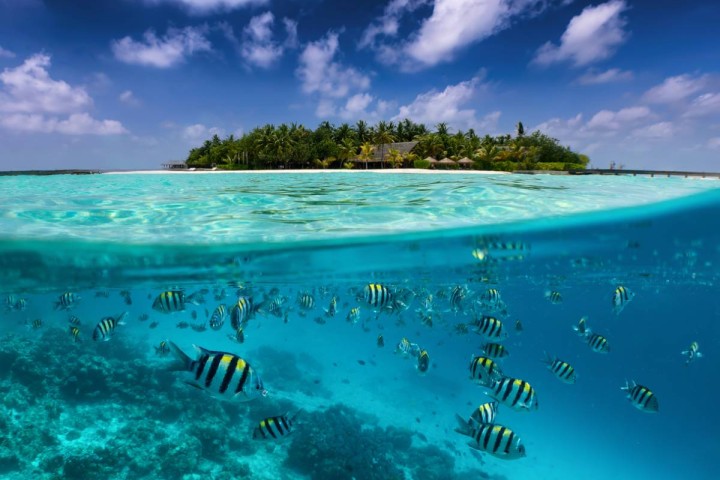World Ocean Day 2022: Amazing facts about mighty water bodies you should know

The majority of life found on earth is aquatic, hailing from the might water bodies that make up 85 per cent of planet earth and are responsible for not only regulating the earth’s climate and producing oxygen, but are also a source of livelihood for many industries across the world. But did you know that the world’s longest mountain chain is underwater? Or that there are more historical artefacts inside the ocean than on the land of all the countries put together?
On World Ocean Day, here are some interesting facts, myths and hidden gems about our deep blues:
INDIAN OCEAN
At a staggering volume of 292,131,000 cubic kilometers, and an average depth of 3890 meters, the massive Indian Ocean covers 20 percent of the Earth’s total surface. This Ocean has the world’s most important ports starting from Durban in South Africa to Melbourne in Australia and all the navigation oil trading routes and major dockyards that come in between.
But surprisingly, despite its huge size and depth, it has a limited variety of marine life. This is because of the high temperatures near the equator, which reduce its oxygen levels, which in turn doesn’t create a plankton-friendly zone for the fish to feed on.
What’s hidden beneath: A submerged continent made of volcanic origins known as the kerguelen Plateau.
ATLANTIC OCEAN
According to European historians, the Atlantic Ocean separates the “Old World” from the “New World” and was named after the ‘Sea of Atlas’ in Greek Mythology. This is not only the first ocean to be crossed by ship and flown over by plane in modern history, but also has the highest tides amongst all the oceans (The Titanic sank in its waters, the Bermuda triangle is found here).
What’s hidden beneath: Allegedly-The Lost City of Atlantis (the utopian kingdom that sank to the bottom of the sea) often shown in movies. An entire mountain range called the mid-Atlantic Ridge that is often captured by satellite images.
ANTARCTIC OCEAN
The Southern Ocean, also known as the Antarctic Ocean, is the polar opposite of the Arctic Ocean and circles the continent of Antarctica. It is the youngest of them all as it was formed only 30 million years ago when Antarctica and South America moved apart. It is the only ocean that goes all the way around the globe encircling the South Pole. The ocean is deep with gigantic icebergs, freezing temperatures, and extreme climatic conditions making it unsuitable for human inhabitation. However, the marine life is exotic and abundant and migratory birds make it a home base in the summers. Sadly, due to an ozone hole in the Antarctic, a lot of the fish have undergone radiation exposure leading to altered DNA and a 15 percent decline in their main food- the phytoplankton.
What’s hidden beneath: Manganese nodules and precious natural resources.
PACIFIC OCEAN
The largest and the deepest of them all, the mighty Pacific Ocean covers 30 percent of the earth’s surface and is bounded by Asia and Australia on the West and the America’s on the East. There are many atolls, coral reefs (including the Great Barrier Reef), and close to 25,000 islands that dot the vast water body. Half of the United States is submerged and exists under the Pacific waters. The Ring of Fire located in the ocean basin where 450 active volcanoes form a ring (hence the name) account for 90 percent of the earth’s earthquakes! Due to the continuous shifting of tectonic plates, the Pacific is shrinking each year by 1 inch! But an inch is nothing for the mighty Pacific!
What’s hidden beneath: The Horseshoe shaped seismically active Ring of Fire.
ARCTIC OCEAN
This ocean is on top of the world, literally and geographically. It is also the smallest and shallowest. To give a comparison, it is eight percent the size of the Pacific and almost the same size as Russia. But it has the largest number of fish and some spectacular marine life that thrive in its icy cold waters!
It encompasses three types of ice: Polar, Fast and Pack that surround the North Pole where Santa allegedly lives! Despite it being cold, this Winter Wonderland is home to four million people including the indigenous Inuits. Tourists visit to see the vast expanse of ice sheets and capture the northern lights (aurora borealis) on an arctic cruise.
What’s hidden beneath: The Unicorns of the Sea also known as the Narwhals.
(Every year, June 8 is celebrated as World Ocean Day)

